Abstract
The yeast Saccharomyces cerevisiae changes cell types by switching the alleles of the mating type locus (MAT) from a to α and vice versa. In the cassette model, these switches—e.g., from a to α—occur when a replica of silent α information (an α “cassette”) replaces the resident a cassette at the mating type locus and is thereby expressed. We have identified a mutation in the locus postulated to be the silent α information (HMLα) and find that a mutation is introduced into the mating type locus as a result of interconversion: HMLα-MATα cells switch to MATa and then to MATα-. The MATα- mutation leads to defective mating and behaves like some previously identified MATα- mutations. These observations satisfy the prediction of the cassette and controlling element models that genetic information is transmitted from HMLα to the mating type locus.
Keywords: cell type differentiation, cassette model, eukaryotic gene control, gene rearrangement, diploidization
Full text
PDF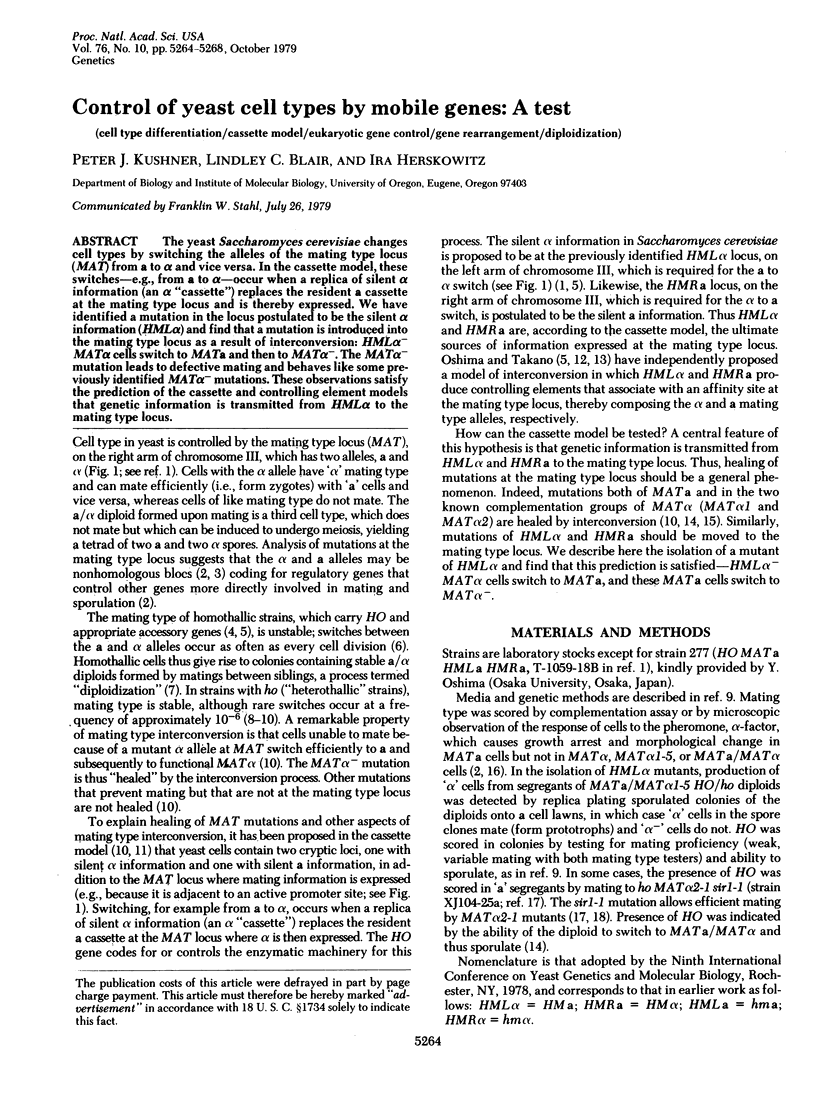
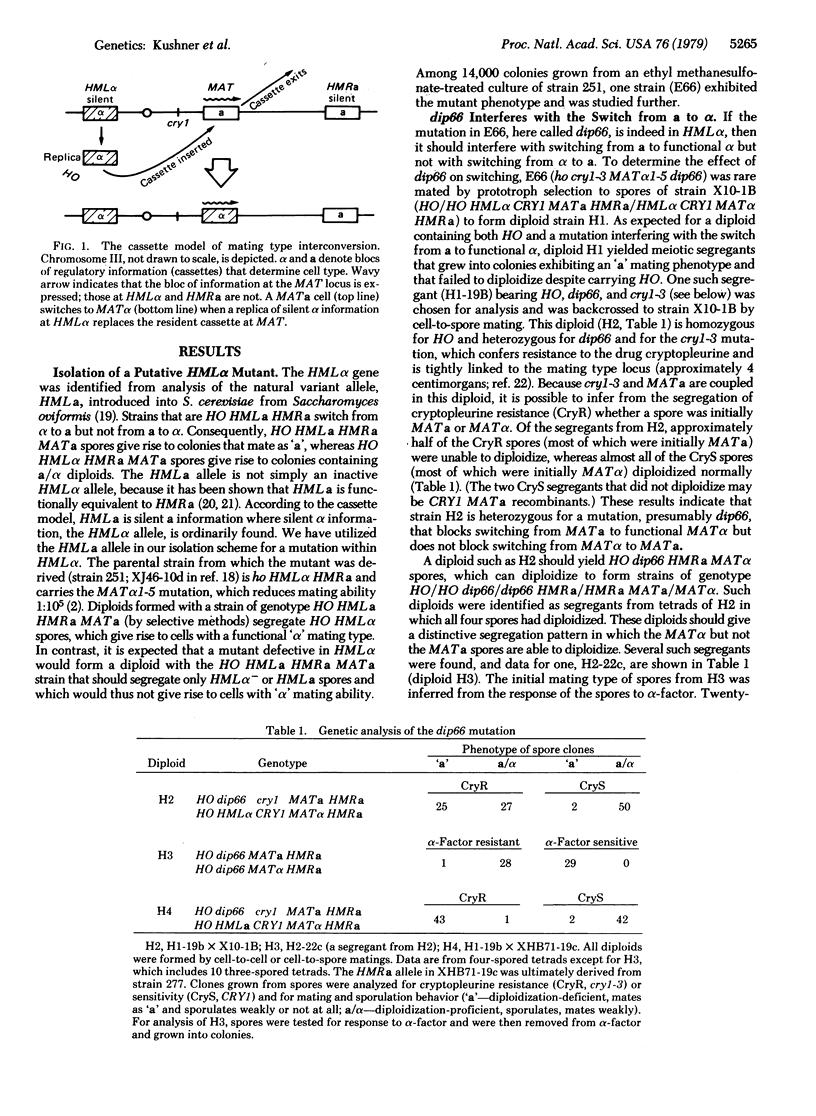
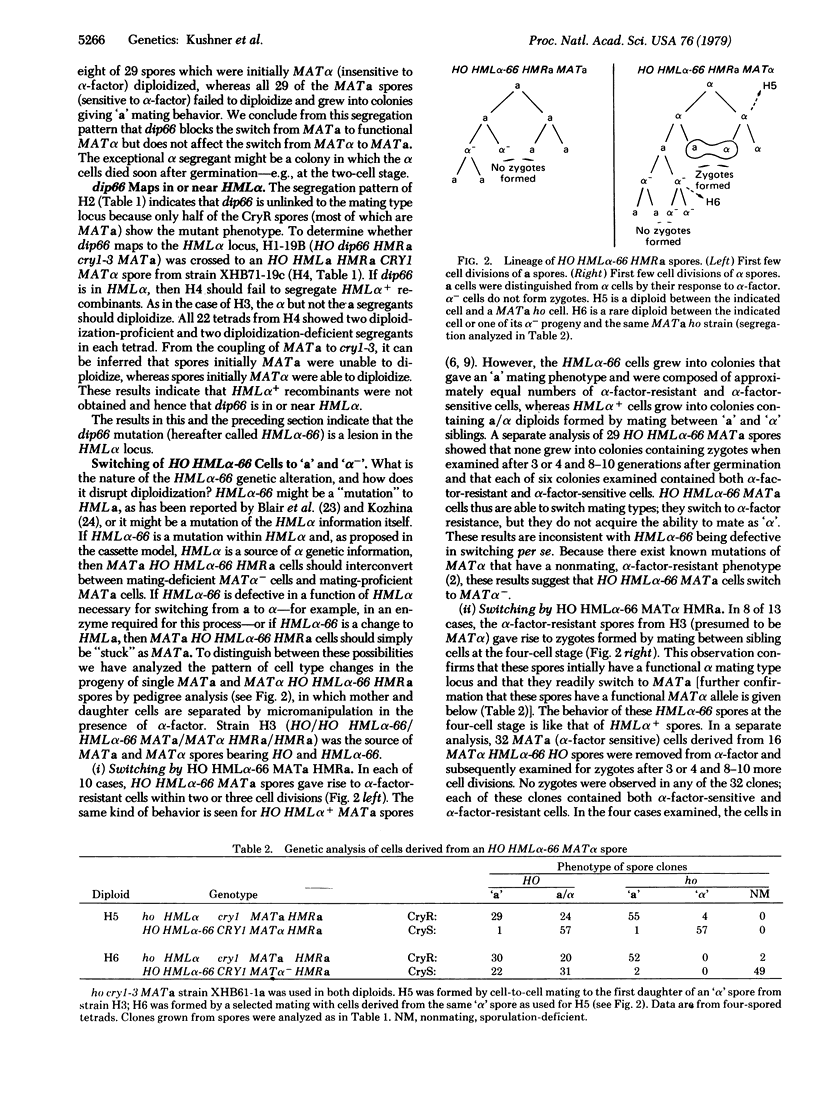
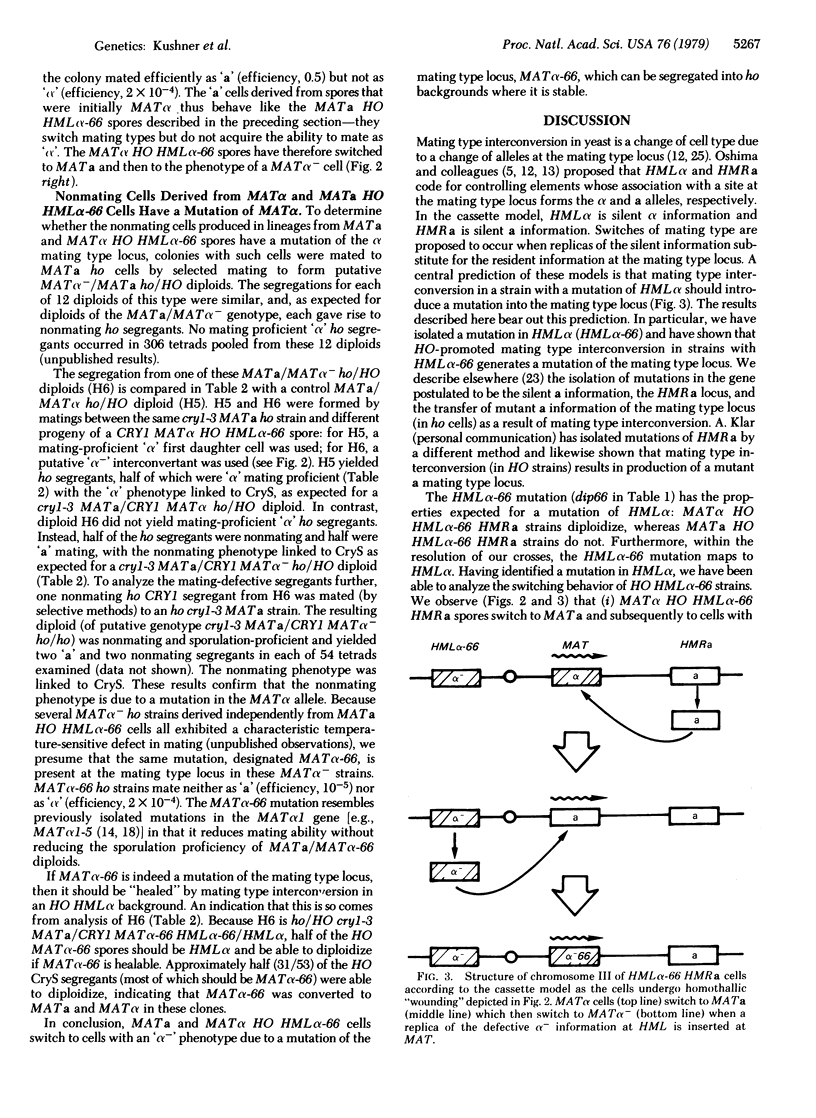
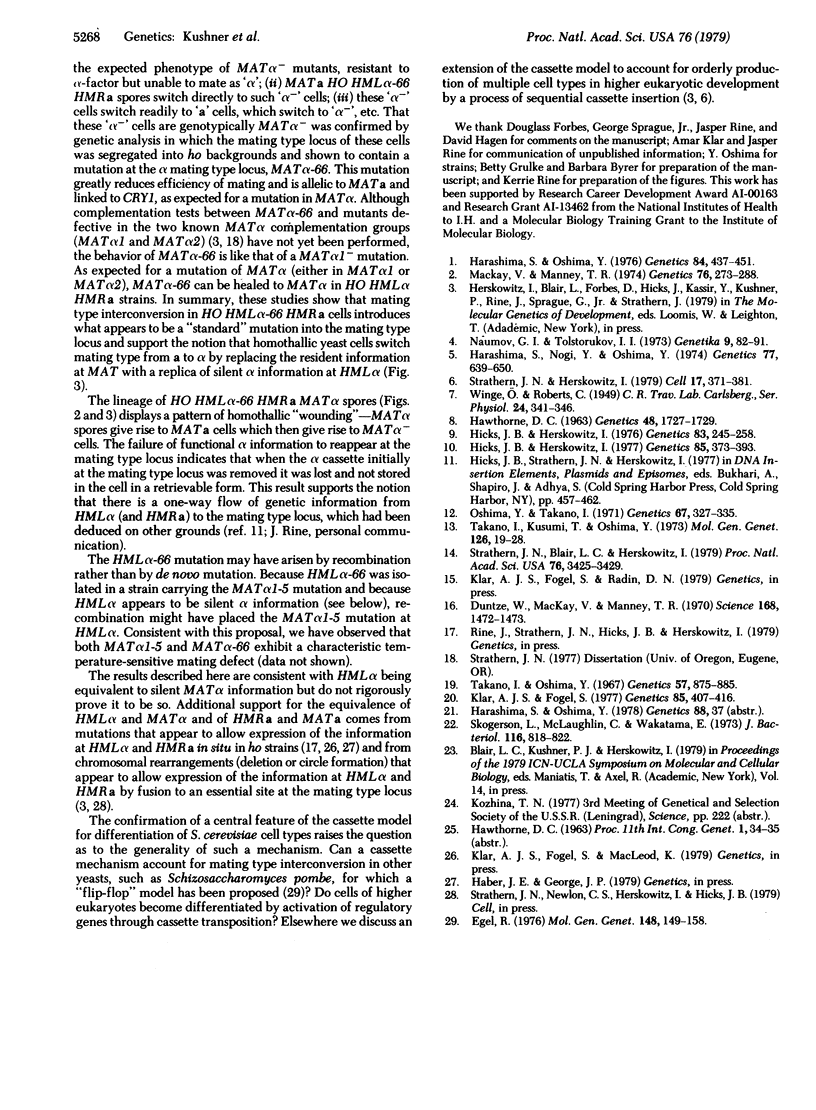
Selected References
These references are in PubMed. This may not be the complete list of references from this article.
- Duntze W., MacKay V., Manney T. R. Saccharomyces cerevisiae: a diffusible sex factor. Science. 1970 Jun 19;168(3938):1472–1473. doi: 10.1126/science.168.3938.1472. [DOI] [PubMed] [Google Scholar]
- Egel R. Rearrangements at the mating type locus in fission yeast. Mol Gen Genet. 1976 Oct 18;148(2):149–158. doi: 10.1007/BF00268379. [DOI] [PubMed] [Google Scholar]
- HAWTHORNE D. C. A DELETION IN YEAST AND ITS BEARING ON THE STRUCTURE OF THE MATING TYPE LOCUS. Genetics. 1963 Dec;48:1727–1729. doi: 10.1093/genetics/48.12.1727. [DOI] [PMC free article] [PubMed] [Google Scholar]
- Harashima S., Nogi Y., Oshima Y. The genetic system controlling homothallism in Saccharomyces yeasts. Genetics. 1974 Aug;77(4):639–650. doi: 10.1093/genetics/77.4.639. [DOI] [PMC free article] [PubMed] [Google Scholar]
- Harashima S., Oshima Y. Mapping of the homothallic genes, HM alpha and HMa, in Saccharomyces yeasts. Genetics. 1976 Nov;84(3):437–451. doi: 10.1093/genetics/84.3.437. [DOI] [PMC free article] [PubMed] [Google Scholar]
- Hicks J. B., Herskowitz I. Interconversion of Yeast Mating Types I. Direct Observations of the Action of the Homothallism (HO) Gene. Genetics. 1976 Jun;83(2):245–258. doi: 10.1093/genetics/83.2.245. [DOI] [PMC free article] [PubMed] [Google Scholar]
- Hicks J. B., Herskowitz I. Interconversion of Yeast Mating Types II. Restoration of Mating Ability to Sterile Mutants in Homothallic and Heterothallic Strains. Genetics. 1977 Mar;85(3):373–393. doi: 10.1093/genetics/85.3.373b. [DOI] [PMC free article] [PubMed] [Google Scholar]
- Klar A. J., Fogel S. The Action of Homothallism Genes in Saccharomyces Diploids during Vegetative Growth and the Equivalence of hma and HMalpha Loci Functions. Genetics. 1977 Mar;85(3):407–416. doi: 10.1093/genetics/85.3.407. [DOI] [PMC free article] [PubMed] [Google Scholar]
- Mackay V., Manney T. R. Mutations affecting sexual conjugation and related processes in Saccharomyces cerevisiae. II. Genetic analysis of nonmating mutants. Genetics. 1974 Feb;76(2):273–288. doi: 10.1093/genetics/76.2.273. [DOI] [PMC free article] [PubMed] [Google Scholar]
- Manuilova E. S., Shapiro N. I. Izuchenie geneticheskogo kontrolia chuvstvitel'nosti kletok mlekopitaiushchikh k letal'nomu i mutagennomu deistviiu ul'trafioletovykh luchei. Genetika. 1973 Nov;9(11):82–89. [PubMed] [Google Scholar]
- Oshima Y., Takano I. Mating types in Saccharomyces: their convertibility and homothallism. Genetics. 1971 Mar;67(3):327–335. doi: 10.1093/genetics/67.3.327. [DOI] [PMC free article] [PubMed] [Google Scholar]
- Skogerson L., McLaughlin C., Wakatama E. Modification of ribosomes in cryptopleurine-resistant mutants of yeast. J Bacteriol. 1973 Nov;116(2):818–822. doi: 10.1128/jb.116.2.818-822.1973. [DOI] [PMC free article] [PubMed] [Google Scholar]
- Strathern J. N., Blair L. C., Herskowitz I. Healing of mat mutations and control of mating type interconversion by the mating type locus in Saccharomyces cerevisiae. Proc Natl Acad Sci U S A. 1979 Jul;76(7):3425–3429. doi: 10.1073/pnas.76.7.3425. [DOI] [PMC free article] [PubMed] [Google Scholar]
- Strathern J. N., Herskowitz I. Asymmetry and directionality in production of new cell types during clonal growth: the switching pattern of homothallic yeast. Cell. 1979 Jun;17(2):371–381. doi: 10.1016/0092-8674(79)90163-6. [DOI] [PubMed] [Google Scholar]
- Takano I., Kusumi T., Oshima Y. An alpha mating-type allele insensitive to the mutagenic action of the homothallic gene system in Saccharomyces diastaticus. Mol Gen Genet. 1973 Oct 16;126(1):19–28. doi: 10.1007/BF00333478. [DOI] [PubMed] [Google Scholar]
- Takano I., Oshima Y. An allele specific and a complementary determinant controlling homothallism in Saccharomyces oviformis. Genetics. 1967 Dec;57(4):875–885. doi: 10.1093/genetics/57.4.875. [DOI] [PMC free article] [PubMed] [Google Scholar]


